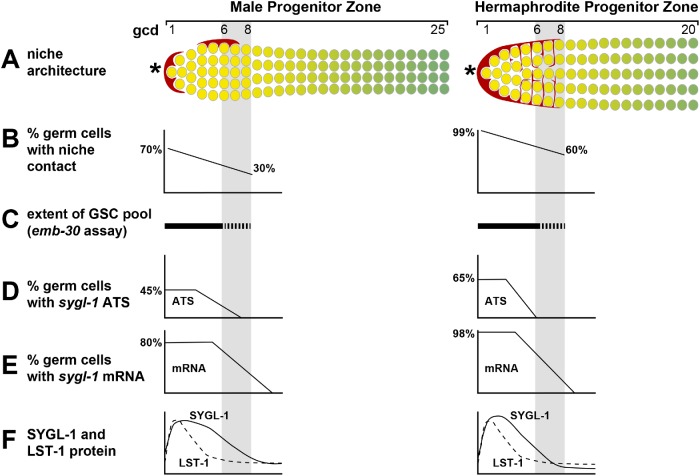FIGURE 8:
Summary of niche and PZ features in males and hermaphrodites. Gray shading marks the estimated boundary of the GSC pool (range 6–8 gcd in both sexes). (A) Diagrams of niche architecture and PZ extent. Left, males possess two asymmetrically positioned mDTC cell bodies or caps that extend minimal cytoplasmic processes and do not form a plexus; right, hermaphrodites possess a single DTC that extends elaborate cytoplasmic processes that form a plexus (red lines between GSCs). *Distal end. (B–F) Graphs summarizing key features. (B) Niche contacts are fewer in males than in hermaphrodites. (C) GSC pool extents are equivalent in the two sexes. (D) The percentage of cells with sygl-1 ATS is lower in the distal germ cells in males but higher more proximally than in hermaphrodites. (E) The percentage of cells with sygl-1 mRNAs is also lower in distal germ cells in males but higher more proximally than in hermaphrodites. (F) SYGL-1 protein extends slightly more proximally in males than in hermaphrodites but LST-1 extents are indistinguishable.

